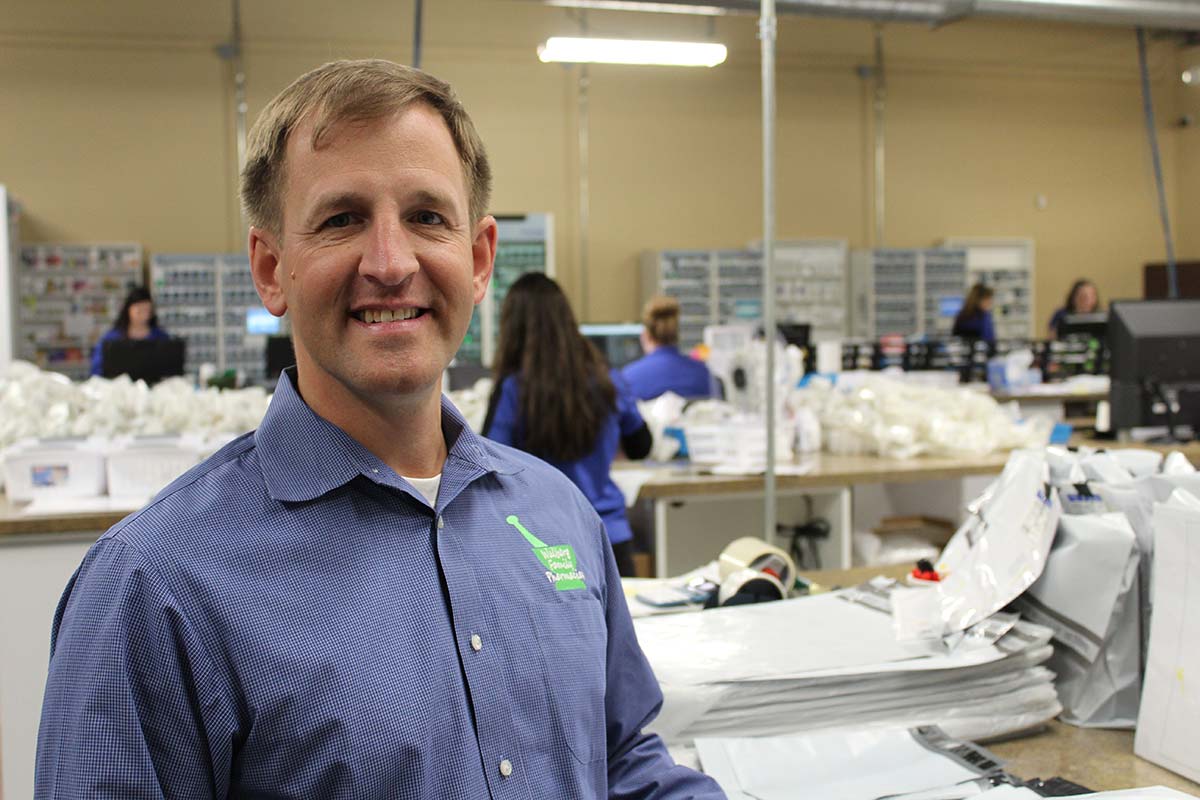Small/Medium/Large: Centralize At Any Size!
When you think of centralized filling, do you think of huge conveyor systems taking up the space of an entire warehouse? While centralized filling can be a great business model for a large health system, it is also scalable enough to be the ideal business model for any size pharmacy! So, whether you have the space of a walk-in closet or a large – warehouse, centralized filling is not just for the big guys.
We sat down with the Director of Operations at Walberg Family Pharmacies, the Pharmacy Operations Senior Manager of Essentia Health, and the former Director of Pharmacy at Ascension to discuss how they successfully implemented centralized filling as a business model for their pharmacies. From best practices to lessons learned, here’s what you need to know if you’re considering centralized filling.
Why Centralization?
Walberg Family Pharmacies is no stranger to automation. From automated pouch adherence packaging to vial filling machines, they’ve implemented automation in each of their 11 stores to improve efficiency. For example, they explain how instead of having one vial filling machine in six different stores, they consolidated four of them into a centralized filling operation to maximize the efficiency of the machines and of staff. “We have four Max’s lined up together and we’re able to hold over 800 different NDCs in the machines which increases the efficiency of the machines and the staff,” said their operations director. Increasing efficiency for the stores is the “why” for Walberg Family Pharmacies. Consolidating previously spread-out technology increased efficiency for ALL stores and cut down inventory costs. In addition, centralization allows pharmacies to save money on inventory by having one bottle of an expensive drug used for multiple stores, ultimately driving down the cost of both medication and dispensing.

walberg pharmacy bretton
The driving force for Essentia Health to move toward centralized pharmacy services was to make a difference for their staff, community, and patients. Any decision they make starts with the staff. Happy, engaged, respected, and valued staff translates into providing more for your patients. Centralization allowed their incredibly talented pharmacists to practice at the top of their licenses and spend time focusing on clinical services instead of counting pills.
“We lead with the people and centralization is just the tool to make it all come together,” said their pharmacy operations senior manager.
For Ascension, centralization allowed for strategic purchasing, which saved them millions of dollars. Their former director of pharmacy said it best, “How a patient pays for their prescription is no less important than the drug interactions they may have.”
Surprises
So, you’re considering central fill as a business model for your pharmacy. What surprises might you expect to see along the way?
The challenge of changing everyone’s mindset about how centralization works was a surprise to all three pharmacies. As with most new things, staff were reluctant to trust the system. Walberg Family Pharmacies allowed their staff to be skeptical and double-check the process as they worked to get buy-in.
Essentia Health was surprised by the influence of the technician and the evolution of their role with centralization. Centralization allows you to redefine the role of the pharmacy technician, which creates positive change and grows your business.
Lessons Learned
The biggest lessons learned by Walberg Family Pharmacies were to go slow, have patience, and be prepared to pivot. They went from rolling out one store for two to three weeks to rolling out two stores every three days. They abandoned previous strategies and came up with new ideas to move toward the right goal, keeping in mind the best ideas come from your team. Walberg Family Pharmacies advises retail pharmacies to start by getting their patients synchronized. Sixty percent of their volume at each store is synchronized, which makes for a level workday. Adding central fill pulled another 60% of the volume off the stores and into the central fill process.
At Ascension, one lesson learned was just how much centralization helps. As a result, they reduced employee prescription prices by over 50%, combatted the effects of the labor shortage and created new revenue streams.
For Essentia, automation reduced dispensing costs by 72-75%, leaving them wondering why they didn’t centralize sooner!
Filling prescriptions for less money, in less time, and more efficiently allowed all three pharmacies to offer additional clinical services. In addition, they were able to consolidate inventory and reduce operating costs. What would you do with an increase in monetary and time savings?
Now that you have the scoop from a few centralization experts, it’s time to take the next steps in your centralization journey! Check out our centralization checklist here to guide you along wherever you are in your process.

On-Demand Webinar: Small/Medium/Large: Centralize at Any Size!
We’re Talking Automation!
We brought together a panel of experts from organizations of all sizes to discuss the possibilities for central filling operations.
Learn how centralized filling is truly a business model for all sizes, how to build your business case and what to look for in a partner.
Our panelists:
- Matt Shellenbarger, PharmD., Director of Operations, Walberg Family Pharmacies
- Zach Jonett, PharmD., Pharmacy Operations Senior Manager, Essentia Health
- Mike Young, Parata’s VP of Pharmacy Strategy, formerly Director of Pharmacy at Ascension
This is the first in a series of no-cost educational webinars featuring experts from Parata and the pharmacy community. Look for additional sessions coming soon!
